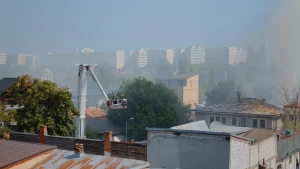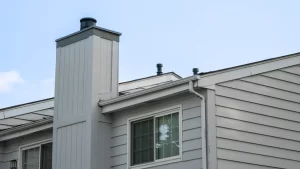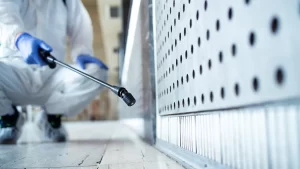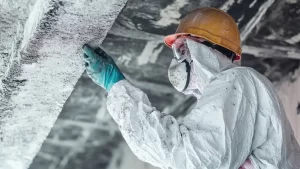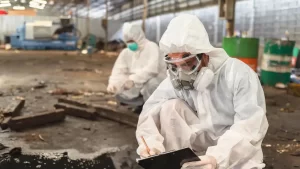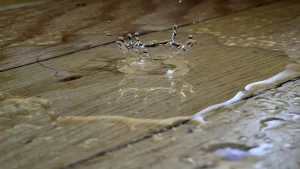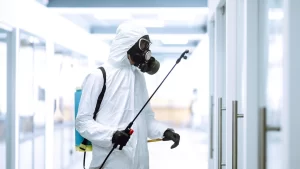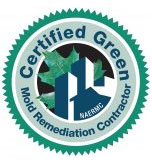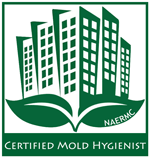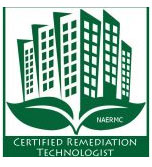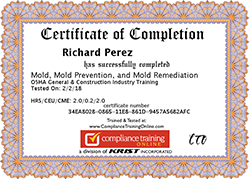Fire damage restoration is the professional process of repairing and restoring a property that has been affected by fire, smoke, or water used to extinguish the flames, including addressing smoke damage. At California Certified, we understand how urgent and complex this process can be, which is why our team is dedicated to making your property safe, functional, and habitable again. Acting quickly and effectively can prevent further structural damage, reduce health risks from smoke and soot, and preserve valuable belongings. Fire damage restoration is not just about cleanup; with California Certified, it is about protecting your property, minimizing long-term losses, and restoring normalcy after a devastating event.
Fire Damage
Fire damage affects much more than what is visible on the surface. It includes:
- Structural damage: Walls, floors, and roofs can be weakened or destroyed by flames and heat.
- Smoke and soot damage: Residue from smoke can stain surfaces, corrode materials, and create lingering odors.
- Water damage: Water used to extinguish fires can soak into structures, leading to mold growth and further deterioration.
Common causes of fire damage include electrical faults, kitchen accidents, unattended candles, heating equipment malfunctions, and natural disasters such as wildfires.
The immediate dangers of fire damage include risk of injury from unstable structures, inhalation of toxic smoke, and exposure to hazardous debris. Long-term effects can involve compromised structural integrity, costly repairs, health problems from prolonged smoke exposure, and the loss of personal or business property. Understanding these risks is crucial for timely and effective restoration.
Fire Damage Restoration
Fire damage restoration is the professional process of repairing and restoring a property after it has been affected by fire, smoke, or water used to extinguish the flames, which often requires specialized fire restoration services. At California Certified, our primary purpose is to return the property to a safe, functional, and aesthetically acceptable condition while preventing further damage.
The key goals of fire damage restoration include:
- Restoring safety: Ensuring the structure is secure and free from hazards such as weakened walls, exposed wiring, or lingering smoke toxins.
- Restoring functionality: Repairing or replacing damaged systems, appliances, and structural elements so the property can be used as intended.
- Restoring appearance: Cleaning smoke and soot residue, deodorizing, and repairing visible damage to make the property look as close to its original state as possible.
While some minor cleanup may be handled by homeowners, DIY methods often fall short of fully addressing the hazards and long-term effects of fire damage. Professional restoration from California Certified, provides specialized equipment, expertise, and techniques that ensure thorough cleaning, safety compliance, and effective recovery, reducing the risk of hidden problems such as mold or structural instability.
Damage Assessment
Damage assessment is the first critical step in the fire damage restoration process. At California Certified, our professionals carefully evaluate the full extent of fire, smoke, and water damage to determine the scope of repairs and cleanup needed.
During the assessment, our specialists consider several important factors:
- Structural integrity: Inspecting walls, floors, ceilings, and the roof for fire-related weakening or potential collapse.
- Electrical systems: Checking wiring, outlets, and appliances for damage that could pose safety risks.
- Personal property: Evaluating furniture, electronics, and other valuables to determine what can be restored and what may need replacement.
A thorough damage assessment from California Certified is essential for accurate restoration planning and cost estimation. It also provides necessary documentation for insurance claims, helping homeowners and business owners receive proper coverage and support for repairs. This step ensures that all areas of the property are addressed efficiently and safely.
Fire Damage Restoration Process
At California Certified, our fire damage restoration process follows a structured series of steps to ensure your property is safely and effectively restored after a fire. Each stage is designed to minimize risks, address visible and hidden damage, and return your home or business to its pre-loss condition.
Step-by-step overview:
- Emergency Services: Professionals first secure the property to prevent unauthorized access and further damage. This includes boarding up windows or doors and removing excess water from firefighting efforts.
- Debris Removal: Burnt materials, hazardous waste, and damaged items are carefully cleared from the property to create a safe and clean workspace.
- Smoke and Soot Cleanup: Walls, ceilings, floors, and personal belongings are cleaned to remove soot and smoke residue, which can cause odors, stains, and long-term damage.
- Structural Repairs: Damaged walls, floors, roofs, and other structural elements are repaired or replaced to restore the property’s integrity and safety.
- Contents Restoration: Furniture, electronics, and personal items are evaluated, cleaned, and restored whenever possible to salvage valuable possessions.
- Final Inspection: After all repairs and cleaning are completed, a thorough inspection ensures the property is safe, fully restored, and ready for occupancy.
Following this structured process ensures that the property is not only cleaned but also fully restored to a safe and functional condition.
Debris Removal
Debris removal is a crucial step in Fire damage restoration that involves clearing out all burnt materials, hazardous waste, and damaged items from the property, and includes soot removal. Removing debris not only improves safety but also creates a clean environment for the next stages of restoration.
Key points about debris removal include:
- Process and importance: Professionals carefully sort and remove debris to prevent contamination, reduce fire hazards, and prepare the property for repairs and cleaning. Proper disposal also ensures compliance with local regulations.
- Safety precautions and equipment: Technicians use protective gear, respirators, gloves, and specialized tools to handle sharp, toxic, or unstable materials safely. Heavy-duty equipment such as dumpsters, industrial vacuums, and debris chutes may be used to manage large-scale damage.
- Aiding faster restoration: By removing debris efficiently, restoration teams can access damaged areas quickly, assess structural issues, and begin repairs without delay, speeding up the overall recovery process.
Effective debris removal is essential for both safety and efficiency, laying the foundation for a complete and thorough fire damage restoration.
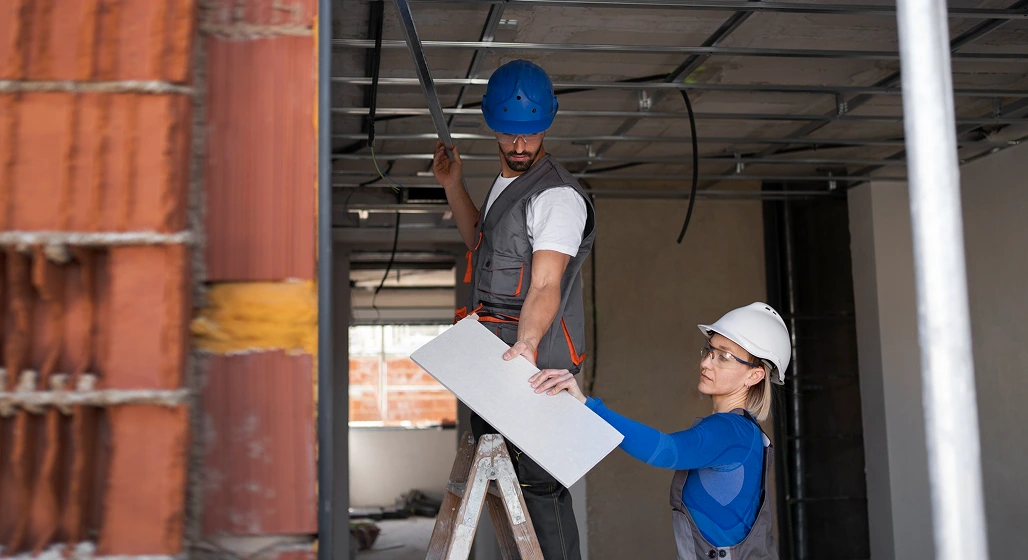
Fire Cleanup
Fire cleanup is the process of removing soot, smoke odors, and water damage from a property after a fire, which encompasses smoke damage cleanup. This step is essential for restoring a safe and healthy living or working environment. Proper fire cleanup prevents lingering odors, stains, and potential health hazards caused by smoke and soot residues.
Key aspects of fire cleanup include:
- Focus areas: Cleaning soot from walls, ceilings, and floors, eliminating smoke odor from air and surfaces, and addressing water damage caused by firefighting efforts.
- Methods used: Professionals may use thermal fogging to neutralize odors, ozone treatments to remove persistent smoke smells, and deep cleaning techniques on walls, carpets, and upholstery to remove residues.
- Professional-grade products and techniques: Specialized cleaning agents and equipment ensure that surfaces are thoroughly cleaned without causing additional damage. These methods are more effective than standard household cleaning products and are essential for fully restoring the property.
Comprehensive fire cleanup is a critical step to make the property safe, livable, and ready for structural repairs and contents restoration.
Electrical Appliances
Fire can cause significant damage to electrical appliances and wiring, even if the devices appear to be intact. Heat, smoke, and water from firefighting efforts can compromise internal components, insulation, and safety features, making appliances unsafe to use.
Key considerations for electrical appliances after a fire include:
- Inspection and cleaning: Professionals carefully examine all electrical systems and appliances to identify damage. Cleaning may involve removing soot, corrosion, or water residues that could interfere with functionality.
- Safe replacement: Appliances or wiring that are extensively damaged are replaced to prevent short circuits, fires, or electrical shocks. Only qualified technicians should handle replacements to ensure safety and compliance with electrical codes.
- Potential hazards: Using damaged electronics after a fire can cause electric shock, start secondary fires, or further damage other appliances. Avoid plugging in or operating any appliance until it has been properly inspected and restored.
Proper handling of electrical appliances is a critical part of fire damage restoration that ensures safety and prevents future hazards in the property.
Contents Restoration
Contents restoration focuses on salvaging and restoring personal belongings and property affected by fire, smoke, or water damage. The goal is to preserve as many items as possible while ensuring safety and cleanliness.
Key aspects of content restoration include:
- Restoration techniques: Professionals use specialized cleaning and deodorizing methods for furniture, clothing, documents, and valuables. Techniques may include dry cleaning, ultrasonic cleaning, freeze-drying for documents, and ozone treatments for odor removal.
- Salvage versus replacement: Items are carefully evaluated to determine whether they can be restored or if replacement is necessary. Factors considered include the extent of fire, smoke, or water damage and the item’s material and value.
- Storage solutions: While restoration is ongoing, items are often stored in climate-controlled and secure facilities to prevent further damage. This ensures that belongings remain safe until they can be returned to the property.
Effective contents restoration helps homeowners and business owners recover valuable items and reduces the overall financial and emotional impact of fire damage.
Damage Restoration Services
Professional damage restoration services provide comprehensive solutions to repair and restore properties affected by fire, smoke, and water, including fire damage restoration services. These services are designed to address both visible damage and hidden hazards, ensuring that the property is safe, functional, and fully restored.
Key professional services include:
- Structural repair: Repairing or replacing damaged walls, floors, roofs, and other structural components to restore stability and safety.
- Smoke and odor removal: Using specialized cleaning methods and equipment to eliminate smoke residues and persistent odors from all affected surfaces.
- Water damage mitigation: Addressing water from firefighting efforts to prevent mold growth, structural deterioration, and secondary damage.
- Mold prevention post-fire: Applying treatments and monitoring moisture levels to prevent mold development after water exposure.
When choosing a restoration company, it is important to select a certified and experienced provider. Certified professionals follow industry standards, use advanced equipment, and have the expertise to handle complex restoration tasks efficiently and safely. This ensures a thorough and reliable recovery process for your property.
Damage Restoration
Damage restoration refers to the comprehensive process of repairing and restoring a property after it has been affected by fire, water, smoke, or other destructive events. The goal is to return the property to a safe, functional, and aesthetically acceptable condition while preventing further damage.
Key points about damage restoration include:
- Restoring property: This involves cleaning, repairing, and replacing damaged structures, systems, and contents. It addresses both visible damage and hidden hazards that could compromise safety or functionality.
- Fire-specific restoration: While general damage restoration can cover water leaks, storm damage, or mold issues, fire-specific restoration requires specialized techniques for soot and smoke removal, odor neutralization, and repair of heat-damaged materials. It also often involves dealing with water damage caused by firefighting efforts.
Understanding the distinction between general damage restoration and fire-specific restoration helps homeowners and business owners choose the right services for their unique situation and ensures a thorough recovery.
Claims Process
The claims process is an important part of recovering from Fire damage restoration, as it helps property owners receive financial support for repairs and restoration within the cleanup and recovery process. Understanding how to navigate insurance procedures can make the process smoother and faster.
Key points about the claims process include:
- Working with insurance: Contact your insurance company as soon as possible to report the fire and begin the claims process. Provide all requested information and follow their guidelines to ensure your claim is processed efficiently.
- Documenting damage: Take clear photos and videos of structural damage, damaged contents, and affected areas. Keep records of any temporary repairs or cleanup costs to support your claim.
- Support from professional restoration services: Restoration companies can provide detailed assessments, repair estimates, and reports that help substantiate your claim. Their documentation and expertise can streamline communication with insurance adjusters and ensure that all damage is accounted for.
Properly managing the claims process is essential to securing adequate coverage and ensuring that restoration work can proceed without financial delays.


